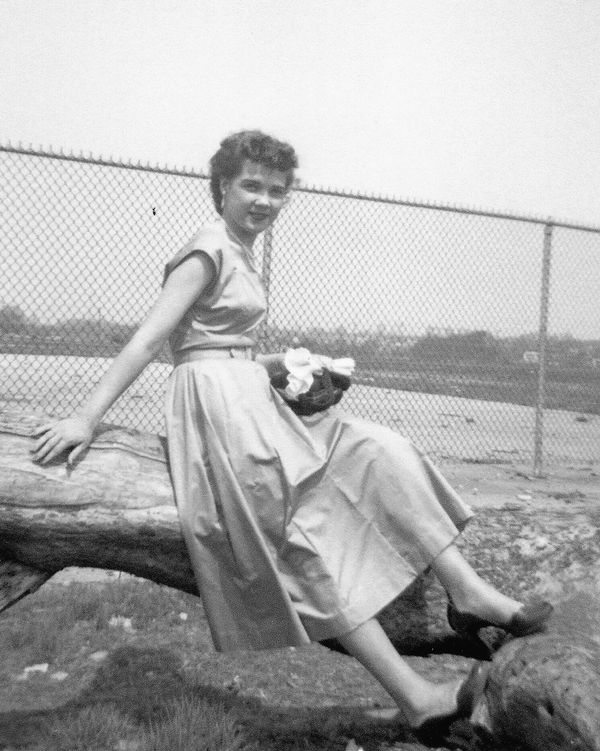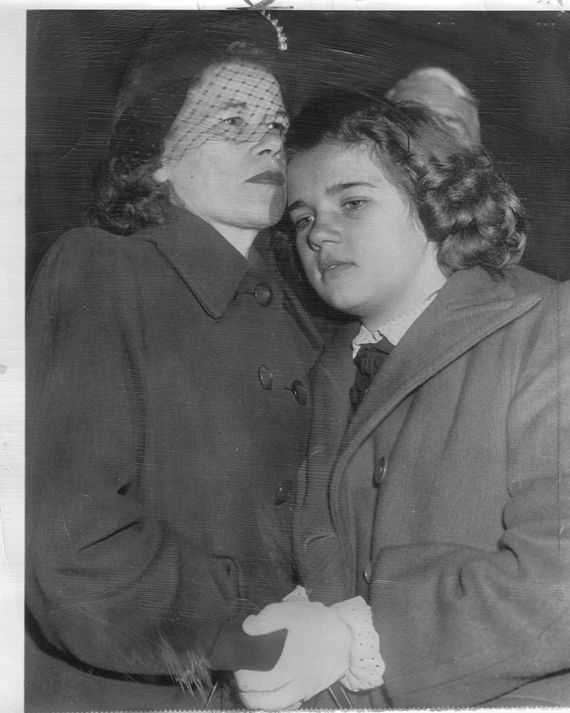
“I can’t believe it’s still here. I didn’t expect this.” The author Sarah Weinman and I had just walked the Atlantic City boardwalk under the hot August sun, past casinos and bars and vape shops and massage parlors, and a small amusement park for children. After about a mile and a half, we come to an address just a few blocks away from the action. Google Maps Street View had depicted the area as a vacant lot, but the actual address corresponds to a row house, one that looks like it has been there for decades.
The Atlantic City address where a notorious pedophile first took a victim, who for two years would pose as his daughter, is just one of the pivotal locations in Weinman’s true-crime debut, The Real Lolita, out Tuesday, in which she details the real-life kidnapping and molestation case that at least partly inspired Vladimir Nabokov’s best-selling novel. Late in Lolita, Humbert Humbert, the most notorious pedophile in literature, briefly contemplates the evil he has perpetrated by referencing an actual crime: “Had I done to Dolly, perhaps, what Frank La Salle, a fifty-year-old mechanic, had done to eleven-year-old Sally Horner in 1948?” After four years of research in a variety of cities, plenty of literary detective work in Nabokov’s archives, and literally retracing so many of the steps that Sally Horner herself had taken, Weinman provides a definitive answer in her stunning book: Yes, he did.
“I don’t hate Lolita,” Weinman laughs when I ask her to clear up a misconception about her motivations for writing the book. “Working on my book has made me appreciate and admire it and love it even more. What Nabokov did was quite remarkable in that he made readers sympathize with a monster.” Humbert’s disturbing yet always compelling narrative dominates Nabokov’s novel, leaving no room to consider the perspective of the young girl who is the object of his obsession. Weinman shifts the focus in The Real Lolita. “With this book, Sally Horner takes precedence,” writes Weinman in her introduction. It seeks to reclaim the narrative of the girl whose tragic life informed a great novel, but who was barely acknowledged as a victim, or even as a person. “We have to reconsider everything whenever the culture is shifting,” says Weinman. “In an age of reassessment, why can’t the victim have some of the spotlight?”
Born in the working-class city of Camden, New Jersey, Sally Horner was 11 years old when in 1948 she was taken to Atlantic City by a man who introduced himself to her mother, Ella, as Frank Warner. He’d told Ella over the phone that he was the parent of a school friend of Sally’s, and was inviting Sally to join his family on a Jersey Shore beach vacation. Weinman notes in the book that when Sally boards the express bus to Atlantic City, Warner does not say hello to Sally’s mother, nor does he appear to be with a family: “Still, she [Ella] tamped down her suspicions. She wanted so badly for her daughter to enjoy herself.” It was the last time Sally’s mother would see her for two years.
In The Real Lolita, Weinman seeks to recreate those years as well as bring to life a portrait of who Sally was before she was kidnapped, gathering as much input as possible from Sally’s surviving friends and relatives. “My attitude with research and with talking to people is, everything is helpful,” says Weinman. “I always prefer to err on the side of knowing or trying to know something rather than giving up.”
The extensive research Weinman did for the book has two prongs: tracing Sally’s movements and imagining her life with La Salle as they traveled from Atlantic City to Baltimore to Dallas, and finally to Southern California; and studying Nabokov’s awareness of Sally’s case and his obsession with pedophilia. As we wandered past Jimmy Buffett’s Margaritaville bar and restaurant, Weinman wondered what Atlantic City might have been like for an 11-year-old girl circa 1948, when the Miss America Pageant still paraded down the boardwalk every year and the coming of the casinos that would both restore and degrade the beach town was still decades in the future.
Finding La Salle’s former boarding house still standing is bittersweet. (She had thought, based on Google Maps, that the lot was vacant, and therefore not as crucial to visit as other sites in her research.) I can see that Weinman is awed that we’ve found one more tiny clue from the mystery of Sally Horner’s kidnapping. “I used every little piece of information I could find just to try to recreate Sally’s unbelievably awful situation, but at that time, people had no concept of what to make of it,” she says. Frank passed Sally off as his daughter and got away with this deception for two years, raising very little suspicion along the way. Upon seeing the house, Weinman wonders what Sally’s life in captivity there was like. Did she go on rides or play games on the boardwalk? Did the playground that’s currently across a vacant lot around the corner from the house exist at the time?
Weinman admits she had to push herself to speculate on Sally’s interior life, a facet that was not a part of her more objective first draft. “My editors here and in Canada worked together and said, ‘You need to put yourself in a little more to fill in some of the gaps.’” Weinman gave herself some parameters: “When I tried to imagine what happened to Sally, I would only imagine a typical day she had.” So, for instance, “Because I knew the street that she lived on in Baltimore, and that there was a diner at the end of the road, I knew some of the names of people she would’ve interacted with. And I had read an oral history of someone who went to Catholic school in Baltimore and who was roughly the same age during that period. He described leaving communion and getting a fried egg sandwich.” Knowing that LaSalle had enrolled Sally in Catholic School when they lived in Baltimore, Weinman ventured further into Sally’s mind in as delicate a way as possible. “If you’re going to communion, you have time to think,” Weinman says. “What do you think about? Do you let yourself feel like you’re free, even though you’ve been emotionally manipulated and abused by this man you have to pretend is your father? What does that do to you?”
We wander back to the boardwalk and get lunch at a restaurant in the Hard Rock Hotel and Casino called Sugar Factory. It specializes in alcoholic drinks that are designed to look like monstrous childhood delights. The menu contains five pages of different kinds of chocolate martinis alone, and the pièce de résistance is their “signature 64 oz. alcohol-infused smoking candy goblets like the Lollipop Passion, garnished with lollipops and candy necklaces.” I eat something called a Garbage Salad while we watch the early-afternoon crowd play the slot machines in the casino the restaurant overlooks. “I don’t know if it would get published now, if some white male author attempted to do this kind of audacious literary experiment,” Weinman says of Lolita, which marked the 60th anniversary of its American publication this past August. And while The Real Lolita sheds some light on the girl who informed the fictional character of Dolores Haze, Weinman does not consider the case closed. “A book is only done as you set it out to be,” says Weinman. Her investigation is still ongoing. “I wouldn’t mind if more people came forward and I had to add their input to the paperback edition. Because that means it’s closer to what the truth is.”





